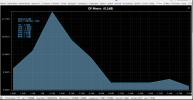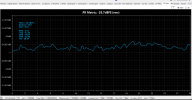I recently purchased a Pioneer VSX-LX505 to see if I could move from a stereo to 7.1.2 setup. I made a head to head comparison, using the same amplifier and speaker, and with all processing off (Pure Direct on AVR, Dirac off on Minidsp). Both speakers were placed right next to each other and same channel was used. I used pink noise and a UMIK-1 to make sure they are both producing SPL within 1db of each other.
Setup was
Apple TV -> Pioneer -> TV -> TV Optical Out -> Minidsp SHD -> Hypex NC502MP Amp Channel 1 -> Speaker (Wharfedale Linton)
Apple TV -> Pioneer -> Pre Out -> Hypex NC502MP Channel 2 -> Speaker (Wharfedale Linton)
I can distinctly make out that the Pioneer Pre-outs lack as much attack and detail as the SHD. I also took a recording of both and performed an ABX test in Foobar, and got 16/16 (test.txt).
Amir found the LX505 to have a SINAD of 97, and MiniDSP is 111, both of which clear CD quality (96db if I am not mistaken). Given this, why is the sound from the Pioneer worse given everything else being equal (and no sound processing taking place). ?
Setup was
Apple TV -> Pioneer -> TV -> TV Optical Out -> Minidsp SHD -> Hypex NC502MP Amp Channel 1 -> Speaker (Wharfedale Linton)
Apple TV -> Pioneer -> Pre Out -> Hypex NC502MP Channel 2 -> Speaker (Wharfedale Linton)
I can distinctly make out that the Pioneer Pre-outs lack as much attack and detail as the SHD. I also took a recording of both and performed an ABX test in Foobar, and got 16/16 (test.txt).
Amir found the LX505 to have a SINAD of 97, and MiniDSP is 111, both of which clear CD quality (96db if I am not mistaken). Given this, why is the sound from the Pioneer worse given everything else being equal (and no sound processing taking place). ?
Attachments
Last edited:




